The "Marine Big Five" Of South Africa
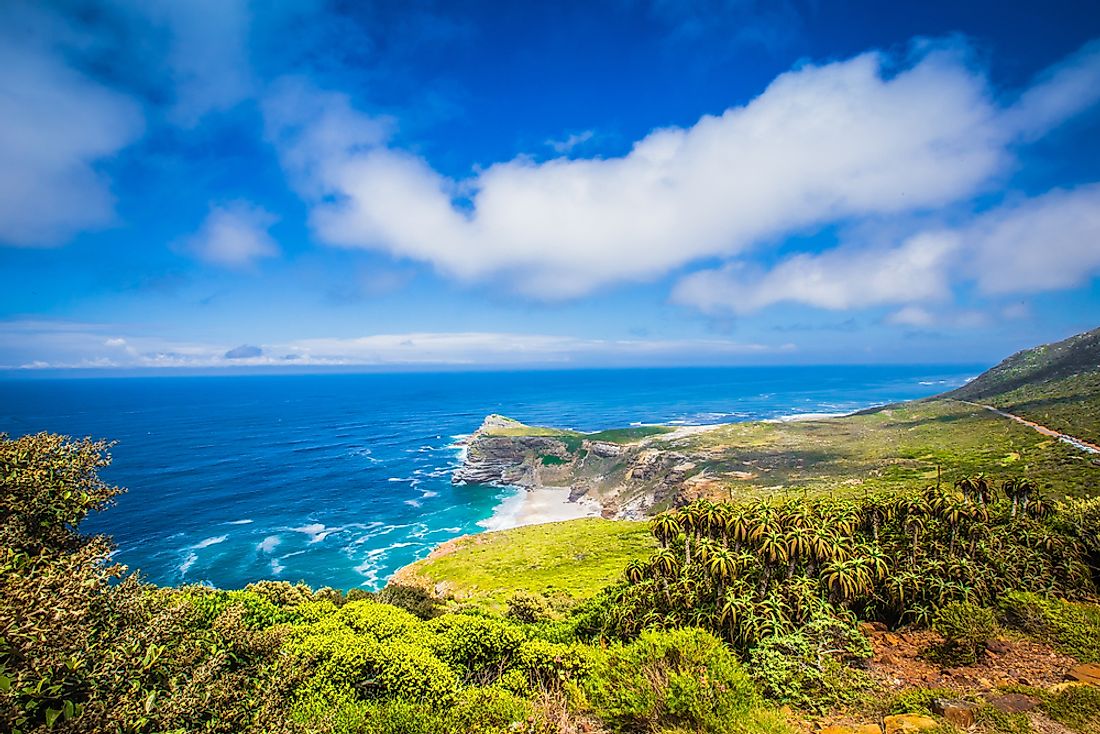
South Africa is a fascinating land and a haven for wildlife. The "Big Five" safaris are highly popular in the country. However, it is not only the terrestrial mammals of the country that draw crowds of tourists to the place but the marine fauna of the nation also manages to win the hearts of the nature lovers of the world. The coastal waters of South Africa host a rich diversity of species of which five groups of marine fauna are the most notable ones. They are often grouped together as the "Marine Big Five" and tours are conducted to allow tourists to observe these animals in their natural habitat in the coastal waters of South Africa. The "Marine Big Five" are as follows:
5. Seals
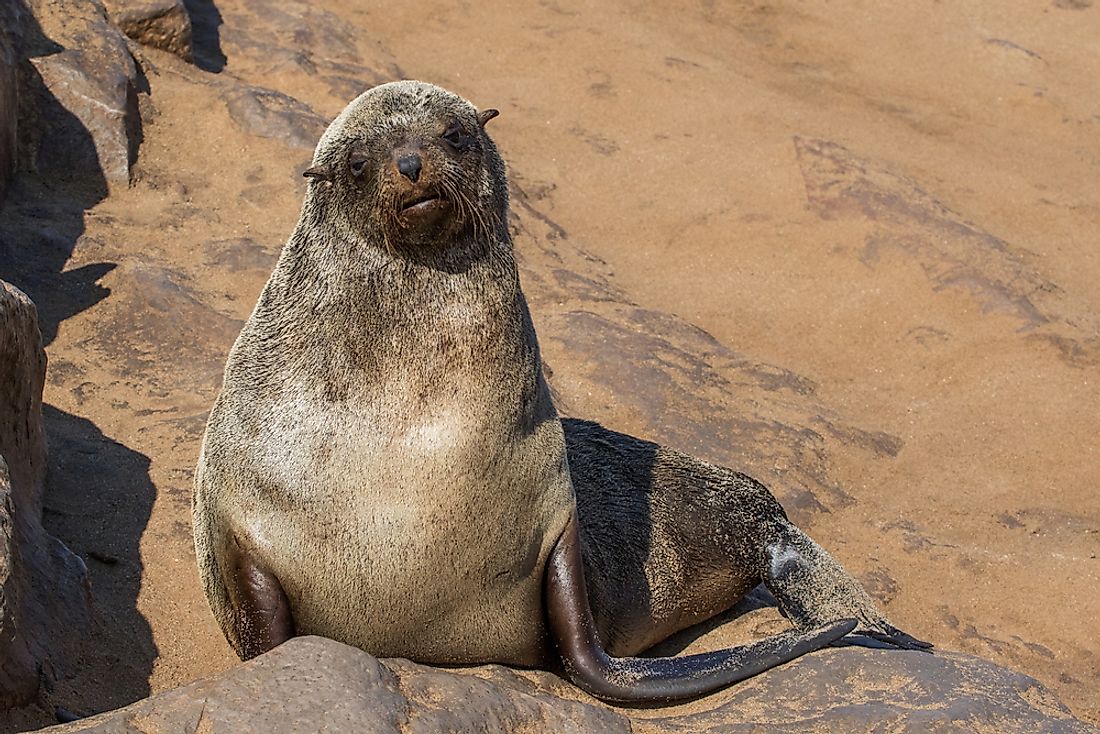
The Cape fur seal, also known by other names like the brown fur seal is a species of fur seal that lives near the southern and southwestern African coast. These seals prefer to inhabit rocky islands and beaches, and rock ledges and reefs along the shores. Occasionally, they also live on sandy beaches. This group of "Marine Big Five" animals spend the greater part of their lives in the sea but do not venture too far off from the land. The Cape fur seal males attain a length of around 2.3 meters while females are about 1.8 meters long. They have a broad head with a pointed or upturned snout. Fish, squid, and crab constitute the major part of their diet. The seals serve as the prey of many larger marine animals like the great white shark, orcas, and whales in water and land animals like brown hyenas, black-backed jackals, etc. These seals were extensively harvested in the past but the process has been outlawed in South Africa since 1990. Unfortunately, in Namibia, seal harvesting continues for their fur and body parts to be used in traditional medicines in some countries.
In South Africa, tourists often flock to the sea in boats to watch seals in action in their natural habitat. The Cape fur seal is known for its friendly nature and often likes to accompany scuba divers. However, it is more wary of humans on land. One popular spot for observing seals in South Africa is the Seal Island or Duiker Island near Hout Bay in close proximity to Cape Town. Boat trips are arranged for tourists to allow the tourists to observe the large seal colony on the island.
4. Penguins
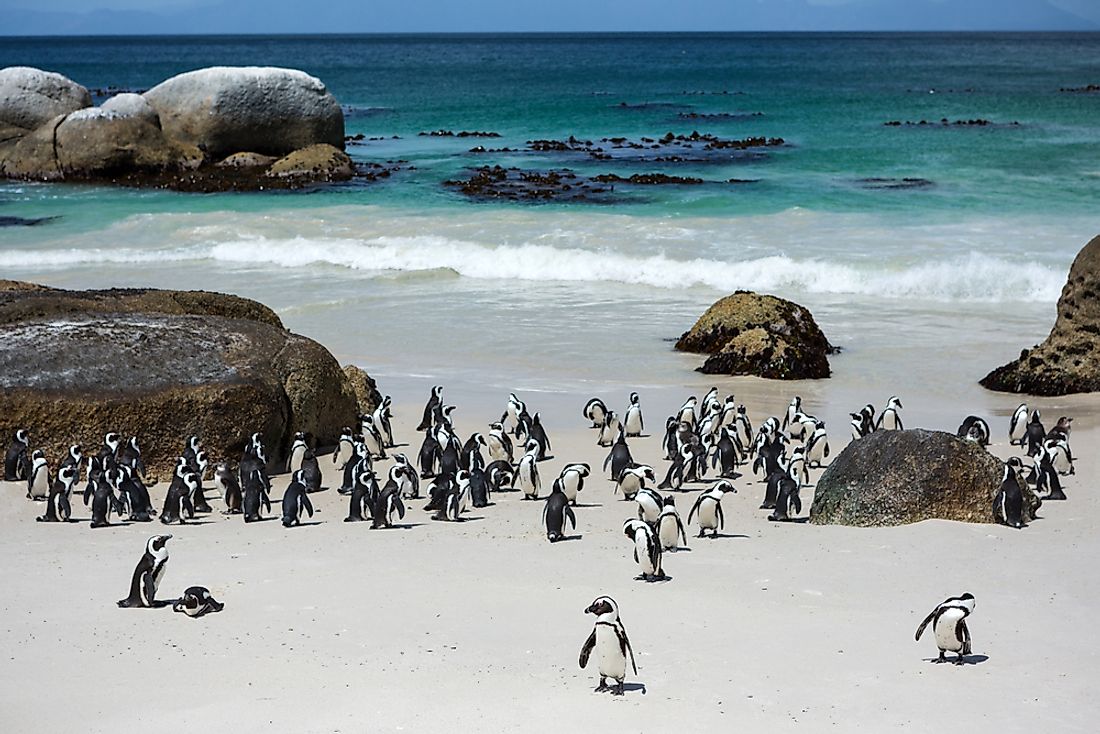
Also known as the black-footed or jackass penguins, the African penguin is regarded as one of the “Marine Big Five” of South Africa. These flightless birds have a streamlined body perfectly suited for life in the sea. The penguins have flippers in place of wings for swimming in the water. Adults of this species weigh around 2.2 to 3.5 kg. The African penguins are clearly identified by the presence of a black facial mask and pink colored skin patches (due to the presence of a gland that aids the penguins in adjusting to changing temperatures) above the eyes. The penguins pursue their prey by diving in the ocean. Squid and fish comprise the majority of their diet. These penguins are found only in the African continent’s south-western coast.
Visiting the penguins is a popular tourist activity in certain locations in South Africa. Tourists to Cape Town ensure they get a chance to observe these charismatic creatures in action in their natural habitat. The Boulders Beach near Simon's Town is one of the best spots to observe these creatures and capture their photographs on a white sand beach with the blue waters of the Atlantic washing the shores. The African penguins can also be observed at Stony Point in Betty's Bay.
Sadly, the African penguins are threatened with extinction and are classified as endangered by the IUCN. Hunting for meat, killing by local wildlife and dogs, the collection of penguin eggs for food, pollution, death as bycatch, and climate change all threaten the existence of these charismatic creatures. Efforts are being made to conserve this species in Africa.
3. Dolphins
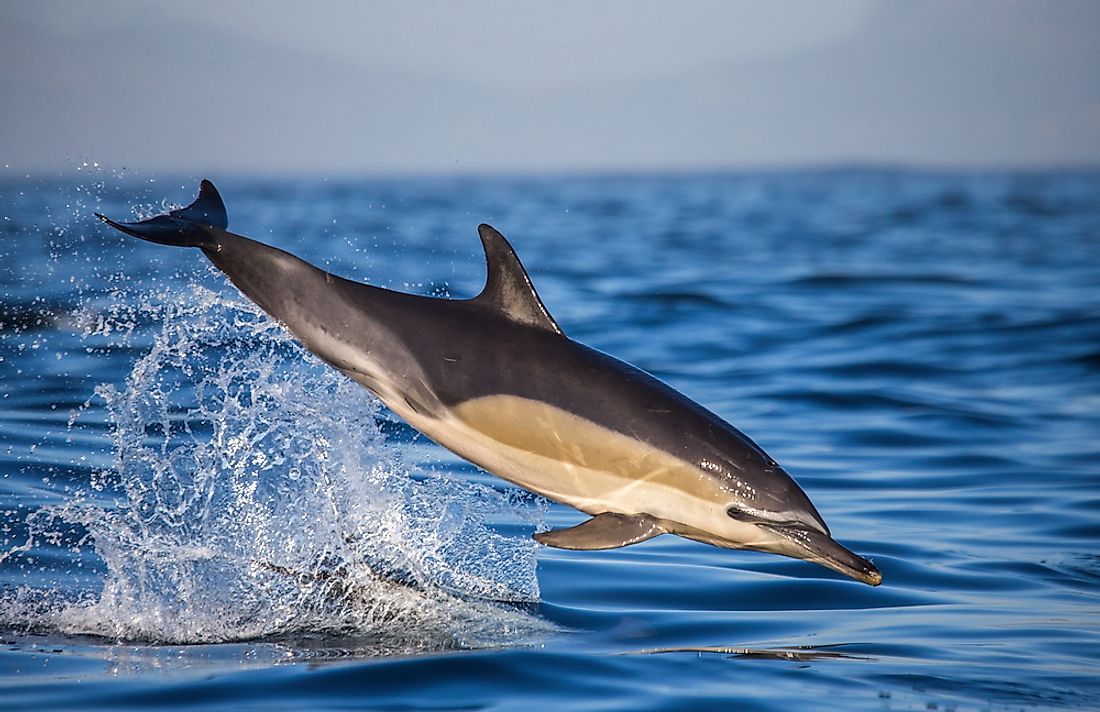
South Africa’s coasts are famous for their rich marine biodiversity. One of most famous marine life in the coastal waters of this country are the different species of dolphins whose graceful movements in the sea are a pleasure to watch. The country has one of the strictest cetacean conservation laws in the planet. Thus, the coastal waters here are a safe haven for dolphins. The most common species observed here include the bottlenose dolphin, humpback dolphin, and the common dolphin. These three species come closest to the shore. Several other species are found in the open ocean away from the South African coast.
Boat tours from the shores near Cape Town are popular for tourists who wish to observe dolphins in the ocean. The annual sardine run is one of the best times to watch dolphins in the region. During this time masses of dolphins can be seen along the eastern coastline. Bottlenose dolphins are the most favorite among tourists for their playful nature in the water. Humpback dolphins tend to shy away from boats.
2. Sharks
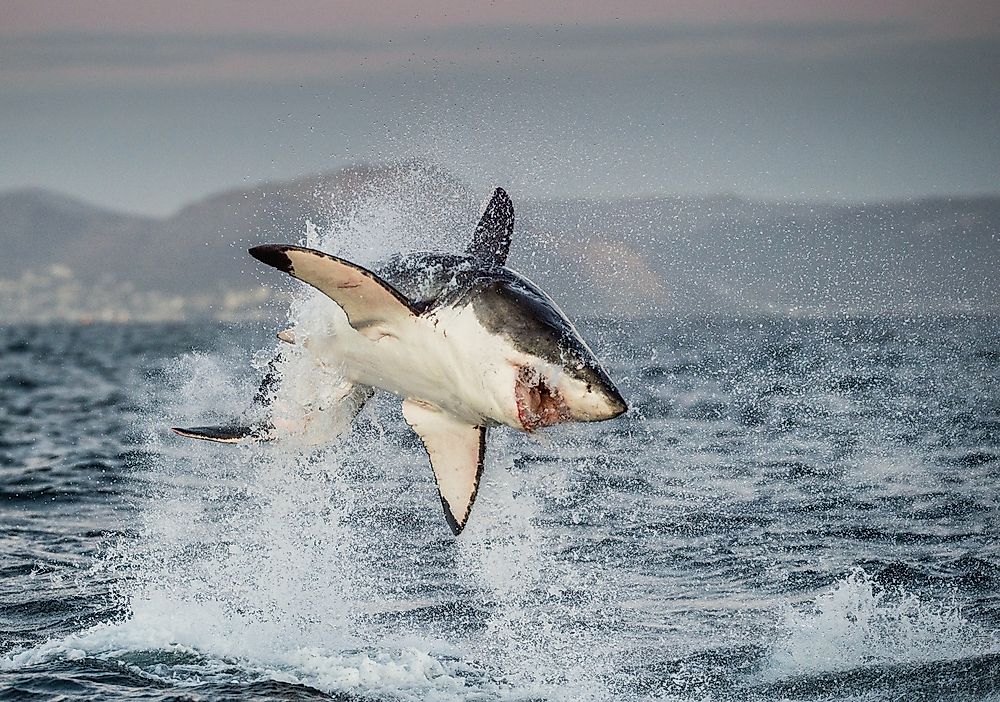
Sharks are quite common along the coasts of South Africa. A large number of shark species can be spotted in the region like the whale shark, spotted ragged tooth shark, bull shark, tiger shark, and of course, the most famous among them, the great white shark. Sharks are excellent predators and hunt to kill. They are known for their keen sense of smell and high sensitivity to vibrations. Most of the species found in the waters of South Africa live in the open ocean and are rarely encountered by humans. However, there have been a few cases of shark attacks in the past and most victims have been bathers or surfers in the sea. In most of these cases, the great white shark, nicknamed the white death, have been implicated. The great white is noted for its size. It can grow up to 20 feet in length. These sharks can live as long as 70 years. Humans and orcas are their only known predators. It is listed as a “Vulnerable” species by the IUCN.
In South Africa, shark watching is a major attraction and the great white shark is the most in demand for the shark tourism industry. Shark cage diving is also common here. It involves encounters with great white sharks in the ocean while the tourist remains within a cage attached to a boat. There are several controversies surrounding this activity. It is said the practice of attracting sharks with bait is unnatural and makes sharks fear humans less. This could encourage shark attacks on the shore. However, opposing views also exists claiming that shark cage diving boosts shark conservation. Gansbaai, a fishing town in the Western Cape, is a popular tourist destination for those interested in cage diving for encounters with the great white sharks.
1. Whales
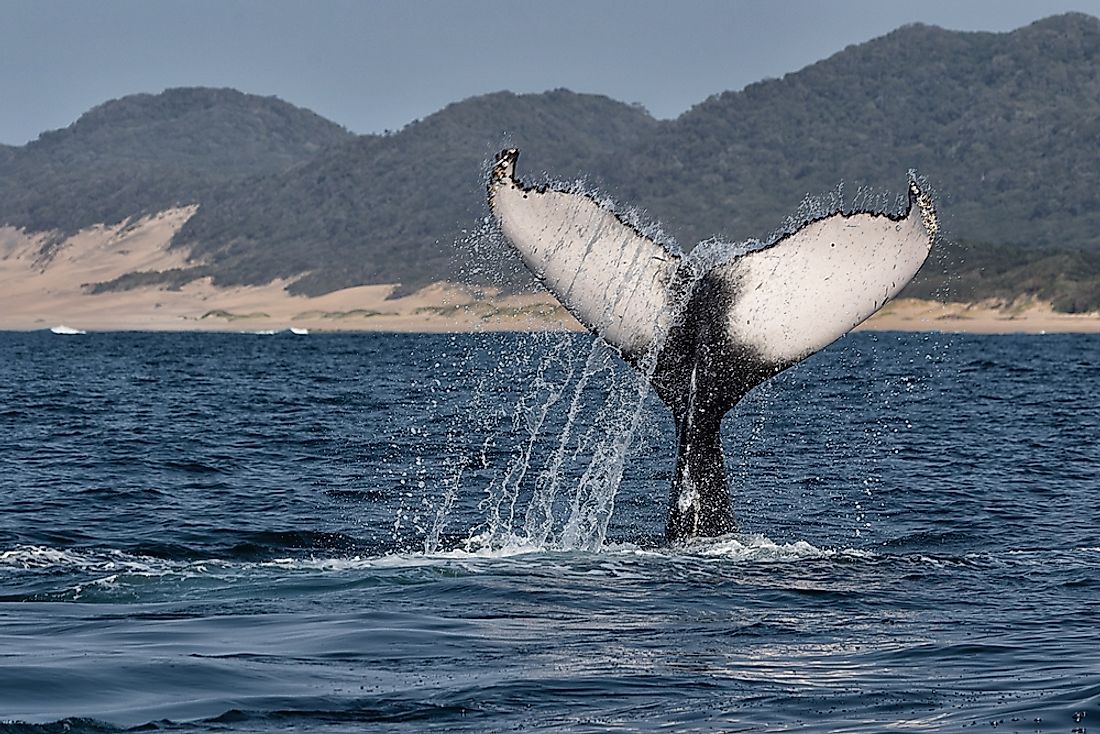
According to several surveys, South Africa has been ranked as one of the ten best destinations worldwide for whale watching. Whales are one of the "Marine Big Five" of the country. The coastal waters of the country host a rich diversity of whales. Every year, hundreds of whales leave their summer homes in the waters of the Antarctic to migrate to the relatively warmer coastal waters of South Africa during the winter season in the Southern Hemisphere. For the following few months, the coastal waters of the country teem with these giant animals who mate, calve, and rear their young ones in the waters of the region.
June to November is usually the best time to watch the whales in South Africa. They can be spotted in the ocean performing various activities like blowing, breaching, lobtailing or spy hopping. The southern right whales and the humpback whales are commonly sighted here during this time. The Bryde’s whale, however, can be spotted all year round. There are laws as to how close the whales can be approached for observing them and tourists are advised to report to the authorities about tour companies that do not maintain these regulations. Tourists to Cape Town have the opportunity to avail one of the many whale watching tours offered in the region. Watching the whales from the land is also quite common. Hermanus, a small town in the Western Cape region is famous for whale spotting from land and is possibly the best land-based whale watching spot in the world. The southern right whales usually prefer to breed in sheltered bays off the Western Cape coast increasing the chances of whale watching in the region. Whales can be seen from many places in the Cape Peninsula.











